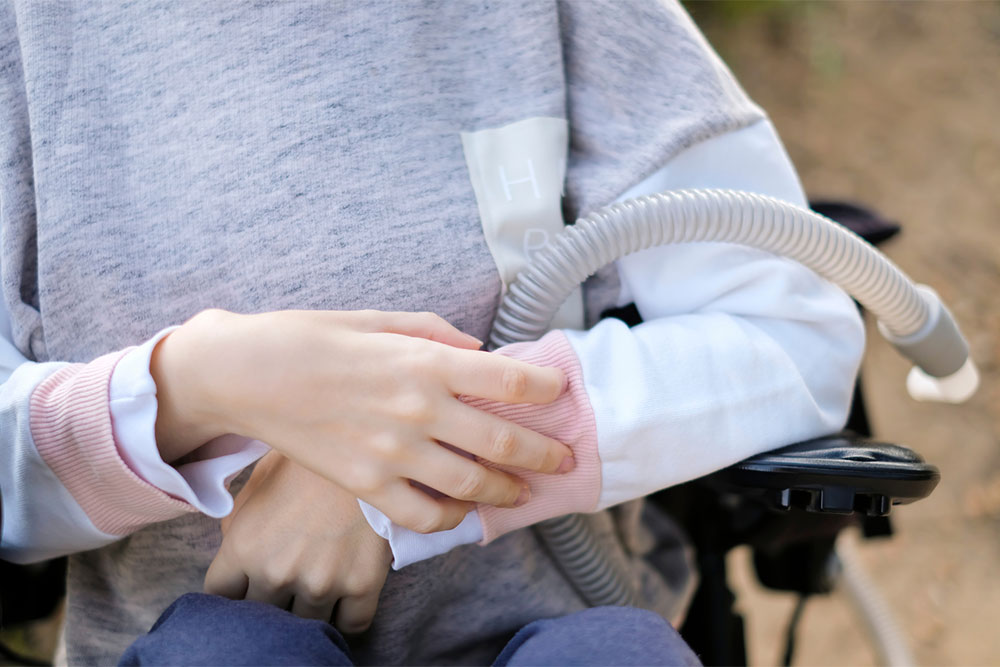Duchenne muscular dystrophy – Common signs and diagnosis

Duchenne muscular dystrophy (DMD) is a rare genetic disorder that affects muscle strength and mobility. It commonly affects young boys, with symptoms developing during early infancy or childhood. Over time, the condition can lead to muscle deterioration. Here, recognizing the symptoms of DMD in time is crucial for seeking an early diagnosis and appropriate management options to slow down disease progression. So, here are a few things to know about the disorder:
What is DMD?
Duchenne Muscular Dystrophy is a genetic disorder characterized by the progressive weakening and wasting of muscles. It is one of the most common forms of muscular dystrophy, and it primarily affects young males. DMD is caused by mutations in the dystrophin gene that lead to the absence or dysfunction of dystrophin—a protein vital for muscle stability. This is an X-linked recessive disorder, meaning it primarily affects males. So, females can be carriers of the mutated gene without experiencing any symptoms, but males born to carrier mothers have a 50% chance of inheriting the mutated gene and developing DMD.
Symptoms
DMD often presents its initial symptoms in early childhood, usually between the ages of 2 and 4. So, it is important to keep an eye out for signs such as delayed motor milestones, difficulty standing, and frequent falls. Other symptoms are:
Progressive muscle weakness: One of the hallmark symptoms of DMD is the progressive weakening of muscles. Those affected may experience difficulty climbing stairs, getting up from the floor, or lifting objects. As the disease advances, muscle loss becomes more apparent.
Gait abnormalities: Children with DMD often exhibit an unusual walking pattern known as the “Duchenne gait,” which includes walking on toes, waddling, and a tendency to lean forward while walking.
Enlarged calves: Another telltale symptom is calf muscle enlargement. Due to muscle degeneration, the calf muscles can become abnormally large, which is a condition known as calf pseudohypertrophy.
Cardiac issues: DMD also affects the heart muscles, leading to cardiac complications like arrhythmia, cardiomyopathy, and eventual heart failure. Regular cardiac monitoring is essential when diagnosed with DMD.
Breathing difficulties: As DMD progresses, respiratory muscles weaken, leading to breathing difficulties. Some may require respiratory support, such as a ventilator, to aid in breathing.
Cognitive function: While DMD primarily affects muscles, one may experience cognitive and behavioral issues, although these are not as common as the physical symptoms.
Causes
Here are two ways in which DMD can develop:
– The primary cause of DMD is genetic mutations. The disorder is linked to mutations in the dystrophin gene on the X chromosome. This gene provides instructions for producing dystrophin, a protein crucial for the structural integrity and function of muscle fibers. In those with DMD, these mutations result in either a complete absence of dystrophin or a nonfunctional form of the protein. The disorder follows an X-linked recessive inheritance pattern. As males have only one X chromosome (XY), a single copy of the mutated gene can cause DMD. In contrast, females have two X chromosomes (XX), and they would need two copies of the mutated gene to develop DMD. Typically, females who inherit the mutated gene become carriers without experiencing the full range of DMD symptoms.
– In some cases, DMD may develop due to spontaneous mutations in the dystrophin gene rather than being inherited from a carrier parent. So, a child without a family history of the disorder could be diagnosed with the disorder. While this is relatively rare, it highlights the complex nature of genetic mutations.
Diagnosis
Clinical evaluation: Testing for DMD typically begins with a clinical evaluation. Here, a pediatrician or neuromuscular specialist will review the child’s medical history, conduct a physical examination, and inquire about family history.
Muscle biopsy: A muscle biopsy may be performed to examine muscle tissue under a microscope and look for the absence or deficiency of dystrophin, a key diagnostic criterion for DMD.
Genetic testing: Genetic testing is a definitive method for diagnosing DMD. A blood sample is analyzed to identify mutations in the dystrophin gene. This method is known to be highly accurate and can confirm the diagnosis.
Electromyography (EMG): EMG tests can assess muscle and nerve function. While not used for primary diagnosis, they can provide additional information about muscle health.
Imaging tests: Medical imaging in the form of MRI or CT scans may be used to check muscle quality and identify areas of muscle degeneration.
Differential diagnosis: This involves distinguishing DMD from other muscular dystrophies and neuromuscular conditions to ensure the most appropriate treatment and care.
Prenatal testing: For families with a known history of DMD or carriership, prenatal testing can be conducted to detect the presence of the dystrophin gene mutation in the developing fetus. This testing allows parents to make informed decisions regarding early interventions. Understanding the inheritance pattern is also crucial for both diagnosis and genetic counseling.
Management options
Here are a few options for managing DMD:
– Multidisciplinary care is essential for managing DMD. This team typically includes neurologists, physical therapists, occupational therapists, respiratory therapists, and cardiologists.
– Certain treatment options and therapies can help manage symptoms and improve quality of life. These may include physical therapy and orthopedic interventions.
– Mobility aids such as wheelchairs, braces, and adaptive equipment can enhance independence and comfort for those with DMD.
– Regular cardiac monitoring and treatment are crucial for managing the cardiac complications associated with DMD.
– Support groups and counseling services can provide much-needed assistance and guidance to help individuals and their families deal with DMD.
Recognition of DMD symptoms and an early diagnosis facilitate timely treatment, helping slow down disease progression. So, one should consult a doctor as soon as they notice any common signs of the condition and discuss suitable treatment options. While there is currently no cure, advancements in research and medical care can lead to the development of new treatment options for the condition.










